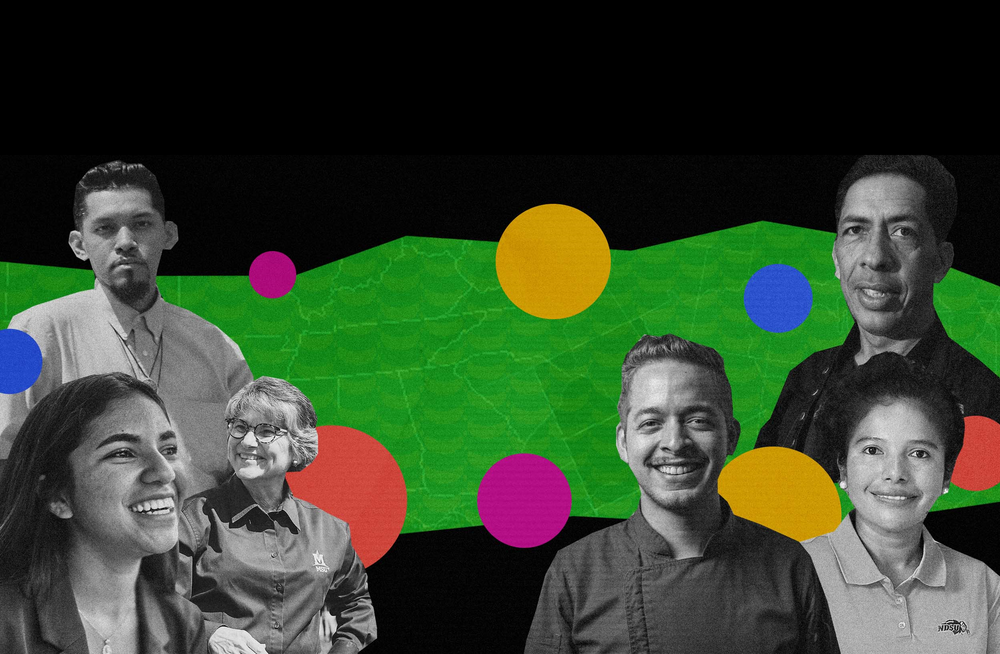
When the 2020 U.S. Census released its data last month, NBC Latino saw a clear trend. The 62.1 million Latinos measured by the count made up more than half of the country’s population growth in the past decade, and in all 50 states, Latino population growth outpaced that of the general population.
But reporters Suzanne Gamboa and Nicole Acevedo, and their managing editor Sandra Lilley, wanted to go beyond the numbers and put faces to this growth, much of which is happening beyond the U.S.’s coastal cities. Their project, “The New Latino Landscape,” published in conjunction with Hispanic Heritage Month, profiles six Latinos in Georgia, Montana, New Hampshire, North Dakota and Texas, and also incorporates interactive maps, graphics, photographs and video.
“We’ve had decades of Latino growth and stories about Latino population growth,” Gamboa said. “This time, the growth is not the immigration wave that came, it’s now the children of immigrants and their children’s children.”
NBCU Academy spoke to Gamboa and Acevedo about how they reported this project. The transcript has been edited for length and clarity.
NBCU Academy: What’s the importance of having people to profile, whose lives can tell the larger story of Latino population growth?
Suzanne Gamboa: The census is so dry in terms of numbers. If you say there are 62 million Latinos in the United States, or there was 148 percent growth of Latinos in North Dakota since 2010, there’s no discussion of who these people are. We’ve had decades of Latino growth and stories about Latino population growth. This time, the growth is not the immigration wave that came, it’s now the children of immigrants and their children’s children.
Nicole Acevedo: A [Pew Research Center] expert told me, “You can either choose that the census story is the big numbers, or a story more embedded in the community.” We made a decision as a team that we wanted to sort of focus on “unusual suspects.” I started looking into the least diverse states, West Virginia and New Hampshire. What I found in New Hampshire was a very small community of Latinos, but some of them were very visible in two of the cities there. The barber Rafael Almonte [in Nashua, New Hampshire] was the perfect character. He’s of Dominican descent, and [his customers represent] the migration of Puerto Ricans and Dominicans coming out of Massachusetts that settled roots and are having kids now. They own businesses that give that vibe, so you step into New Hampshire and you’re like, “Hey, Latinos! I see the little bodega, I see the Dominican barbershop.”
How did you find these people to interview?
Gamboa: Use your sources to find other people on the ground. In North Dakota, there was no coverage of the Latino community. Organic groups that are doing get out the vote in elections, they’re on the ground. Universities with Latino Studies departments, other universities with immigration clinics — who do they know? I tried a temporary job employment agency. I went through the whole Catholic diocese for North Dakota, looking for churches that had Spanish language masses. I had priests calling other priests. That’s just the “shoe leather” stuff, working the phones. You have to think, “This is gonna pay off somewhere, I’m going to find someone good.” And I did.
What finally worked in North Dakota?
Gamboa: I tried looking for experts at universities. I was going through the North Dakota State directory, one by one by one, looking for Latino names. I landed on two or three Latinos in the agriculture department, and decided on a young Latina entomologist. I was like, hey, we don’t see a lot of Latinos in entomology talked about. When I got to Texas, I focused on oil and gas [workers], and wasn’t really getting anywhere. I got this weird idea that I wanted to find a chef that’s Latino. I always thank God for Google. Boom, this Venezuelan chef pops up, Omar Pereney, who’s got this wonderful story. Some people call him a chef savant, chef whiz kid. It’s those gut instincts I think you get as a journalist. I’ve always found that if I don’t follow my gut, sometimes I end up missing a big story.
Nicole, what was your experience finding subjects to interview?
Acevedo: Alfredo Corona, the young Chicano rapper-slash-lowrider from Georgia, came to me thanks to a source of mine that I used in the past. I was like, “Listen, I need a young Latino who’s U.S.-born,” because increasingly the growth of the Latino population is driven by young U.S.-born Latinos. And hopefully he can be of Mexican descent, the largest Latino group in the country. And she was like, “Okay, I think I got you.” I fell in love with Alfredo’s story. His mother was born in El Salvador and his dad was born in Mexico, and they met in Georgia during the construction boom of the Atlanta Summer Olympics of 1996 [which drew Latinos to the state]. It was incredible, because I had that history of the construction boom in my notes. When he said that in his interview, I was like, I could have not planned this. It helps when you find moments like that, because the whole point of the project was to put faces to the numbers.
What’s the difference between cultivating a source who you return to repeatedly versus someone you may profile once for a story?
Acevedo: That’s a good question. This woman does communications for a lot of grassroots groups, which is very key when we cover stuff like the Latino vote. I had been in touch with her, I think, about Puerto Rico. These kinds of people are in touch with many activists and tend to be very insightful. You create a symbiotic relationship, because you periodically check in with them and they want to call journalists that have become experts in certain topics. That pays off, especially when you are in a specific beat based on a community, or a topic or a region. I needed to file this story on Friday. And on Tuesday I needed to nail [a subject], who could I call? And I thought of this person immediately and called her and it worked out.
What tips do you have for reporters starting out, who may not have developed strong relationships with sources yet?
Acevedo: I had a piece of advice when I was in college, that it didn’t matter how young I was, I could become an expert at something to the point that people look to me to write those stories. I remember in college the financial crisis in Puerto Rico was blowing up. The coverage did not represent me or the experiences of my family that still live on the island. I started calling experts, and people want to talk to students, they normally want to help. That’s how I started cultivating my first sources. When I became a professional journalist, I would go back to them, and they already knew me. The first time I did a freelance piece for NBC Latino, I was still in college, and I sent it to my first source who spoke to me. I did the same thing with Latino communities nationwide, contacting people, following people on Instagram, liking their posts. Just find any way that you can become top of mind to people. Making the time to stay in touch with people, especially virtually, really pays off.


